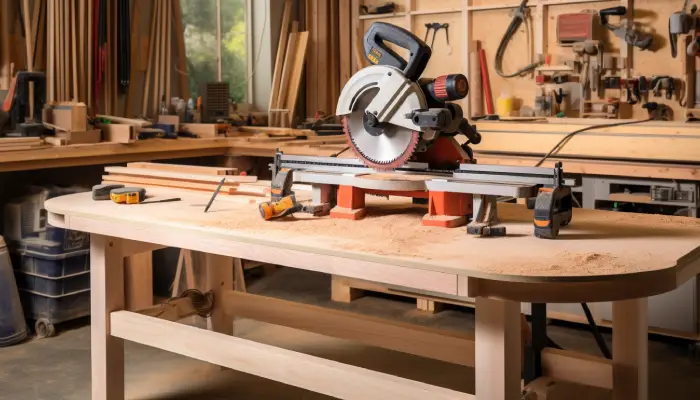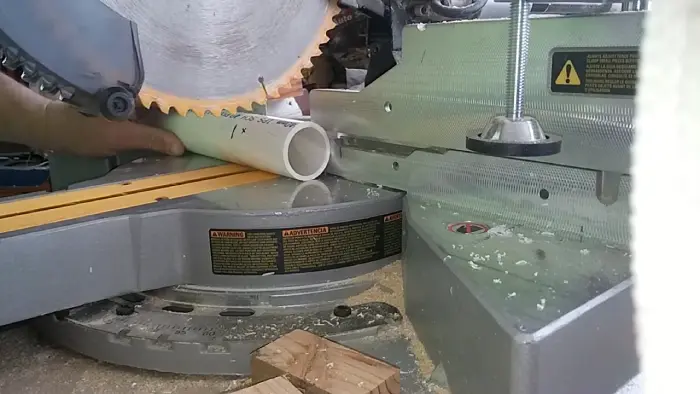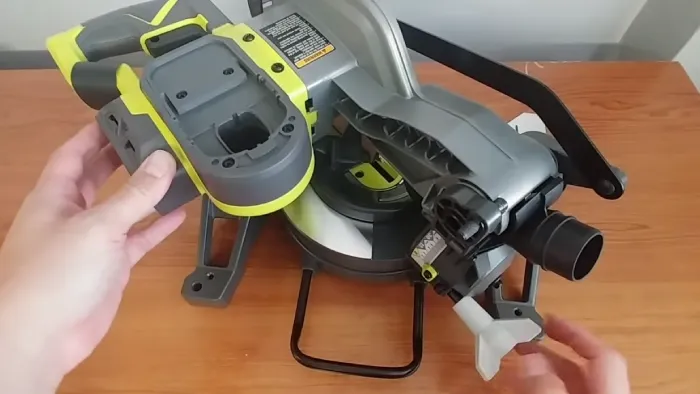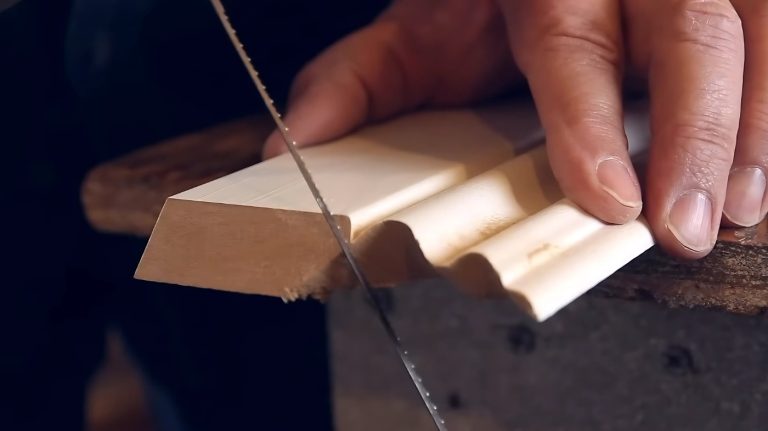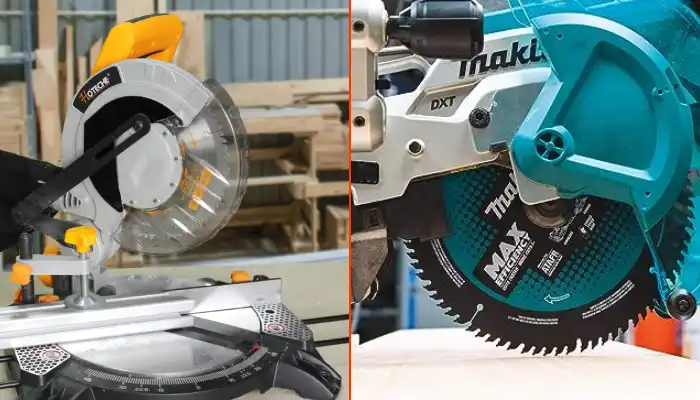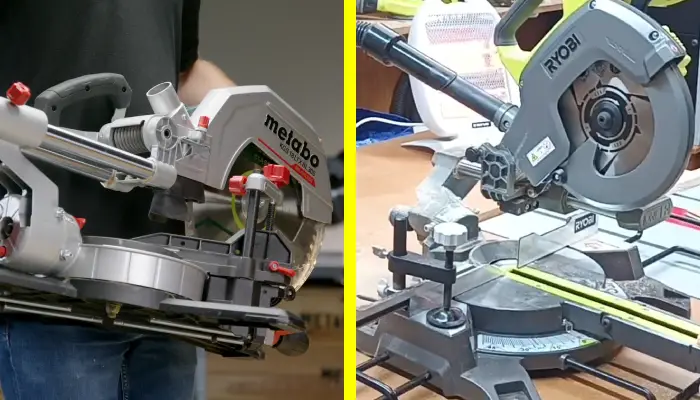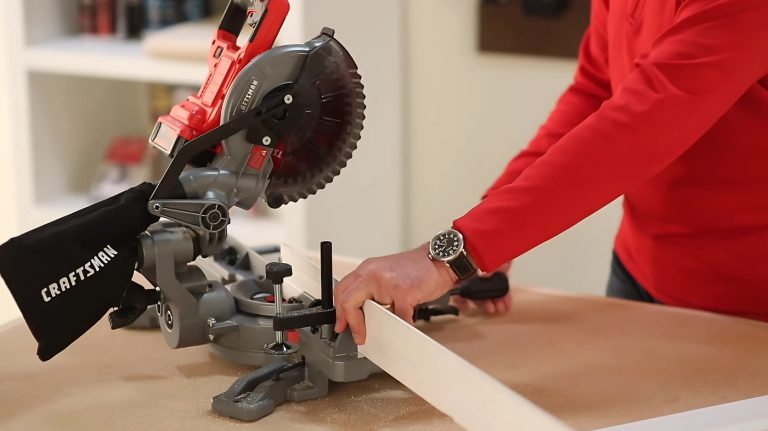Does a Miter Saw Need to Be Bolted Down: Extra Effort for 4 Good Reasons
When you use a miter saw for your woodworking projects, one burning question often comes to mind: Does a miter saw need to be bolted down?
The simple answer is no, it doesn’t require bolting down to operate. But bolting a miter saw offers several advantages, including increased safety and improved cutting precision.
A securely bolted miter saw is less likely to tip over or shift during use, reducing the risk of accidents. It also minimizes vibration, enhancing the accuracy of your cuts.
We’ll explore the advantages of a bolted-down miter saw, and the steps necessary to securely bolt down a miter saw.
How Can a Bolted-Down Miter Saw Be Advantageous?
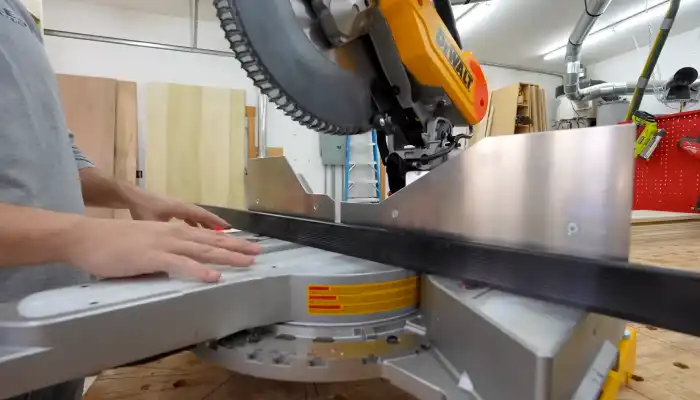
Bolting down a miter saw, while not mandatory, offers several significant advantages. The following are among them:
- Enhanced safety
- Increased accuracy and precision
- Professional settings
- Preventing damage
You can now get a detailed look at the miter saw bolted-down benefits.
1. Enhanced Safety
One of the primary advantages of bolting down a miter saw is improved safety. By bolting down your miter saw, you can greatly enhance its stability, thus reducing the risk of accidents and providing a safer work environment.
When a miter saw isn’t securely fastened, it can easily tip over or move during operation, leading to potential injuries.
However, when the saw is firmly bolted down to a stable surface, it remains steady and firmly in place, providing you with the confidence and peace of mind to work without worrying about the saw moving unexpectedly.
This added stability also allows for more precise cuts, as the saw remains in position throughout the cutting process. So, by bolting down your miter saw, you prioritize your safety and create a secure working environment.
2. Increased Accuracy and Precision
By securing your miter saw, you’ll notice improved accuracy and precision in your cuts. When a miter saw isn’t firmly attached to a stable surface, it can vibrate and shift during operation. This movement can lead to deviations in the cutting angle, resulting in inaccurate and uneven cuts.
However, by bolting down your miter saw, you eliminate these issues. The stability provided by a secure attachment prevents any unnecessary movement, ensuring that your saw remains in the desired position throughout the cutting process.
This stability allows for more precise and consistent cuts, allowing you to easily achieve the desired results.
Whether you’re working on a simple DIY project or a professional woodworking job, securing your miter saw is crucial for achieving accurate and precise cuts every time.
3. Professional Settings
In professional settings, such as busy workshops or construction sites, a bolted-down miter saw is the preferred choice.
It provides the stability needed to withstand the rigors of a fast-paced work environment, reducing the chances of the saw being accidentally knocked over, which could lead to damage or inaccurate cuts.
4. Preventing Damage
To prevent damage to your miter saw and ensure its long-term functionality, it’s crucial to take measures to prevent it from striking the ground forcefully. Bolting down your saw is a highly effective way to achieve this.
By securely fastening your miter saw to a stable work surface, you eliminate the risk of it coming into contact with the ground during use. This preserves the saw’s accuracy and maintains its ability to make precise angle cuts.
Without being bolted down, the saw is vulnerable to bending, which can harm its performance.
How to Securely Bolt Down a Miter Saw?
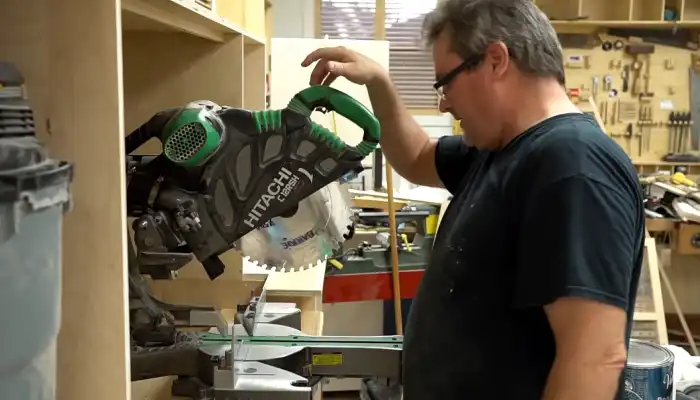
To securely bolt down a miter saw, the instructions below will guide you step-by-step:
Step 1: Collect the Tools and Materials Needed
Before you start bolting down your miter saw, make sure you have all the tools and materials needed.
These include a miter saw, bolts, washers, drill or driver, screws (if mounting on a workbench), and a screwdriver or wrenches. Preparing all these tools and materials beforehand will save you time and frustration.
Step 2: Mark Mounting Holes
To ensure that your miter saw is securely bolted down, you need to mark the mounting holes. Start by placing your miter saw on a sturdy surface such as a workbench or table.
Check if there is enough room for the saw to move freely while adjusting angles and enough support to keep it stable. Then, look at the bottom of the miter saw to locate the mounting holes near the corners of the saw’s base.
Use a pencil or marker to mark the spots where the mounting holes on the miter saw’s base align with the mounting surface (the table or workbench). Accurate marking of the mounting holes makes it easier to drill holes in the next step.
Step 3: Drill Holes in Surface
Now that you have marked the mounting hole locations, the next step is to drill holes in the surface where you intend to mount your miter saw.
Use a drill or driver to create holes at the exact spots you marked earlier. If you are mounting the saw on plywood or similar surfaces, countersink the holes for the bolts to prevent protrusion. Ensure that the holes are the correct size for the bolts to fit through.
Step 4: Position and Secure the Miter Saw
After drilling the holes, place the miter saw on the surface and align the saw’s mounting holes with the holes in the surface.
Insert the miter saw mounting bolts through the holes while ensuring that you add a washer on each side of the hole for stability.
Use a screwdriver or wrenches to tighten the bolts securely, making sure not to over-tighten them as this could cause damage to the saw or the mounting surface.
Step 5: Check for Stability
Once the miter saw is securely fastened, check its stability by gently trying to move it. If the saw is firmly anchored to the surface and does not wobble or move during the test, it is successfully bolted down.
Verify that the saw remains level and does not shift during use. If necessary, adjust the bolts to ensure the saw’s stability. Now, you are ready to use your securely bolted-down miter saw for all of your cutting needs.
Safety Precautions During Bolting Down a Miter Saw
When bolting down your miter saw for enhanced stability and precision, it’s crucial to keep these safety measures in mind to ensure a secure and accident-free workspace:
1. Using the Correct Size and Length Bolts
When bolting down your miter saw, it’s critical to use bolts that are the right size and length. Using incorrect bolts can make your saw wobble and compromise its stability, which can have disastrous consequences.
Therefore, it is essential to choose bolts that fit perfectly, and checking the manufacturer’s guidelines is necessary. Ensure the thread size, length, and materials of the bolts match the requirements for your saw.
2. Level and Flat Surface
When bolting down your miter saw, it’s vital that the surface to which you’re mounting the saw should be level and plane. It ensures that the saw remains stable and doesn’t wobble during use.
Even a minimal deviation can cause significant problems with the accuracy of the saw and affect the quality of the cuts. Using a spirit level is suggested to ensure that the surface is even to prevent any motion or wobble while using the saw.
3. Secure the Saw Firmly
Before operating the saw, ensure that all bolts are tightly secured. If bolts are loose, the saw could tip or move during operation, which could lead to inaccurate and unsafe cuts.
Tighten the bolts adequately using the appropriate tools, and don’t forget to recheck to ensure they’re tightly secured. A general rule to follow is to “snug it up and then give it one more turn.”
4. Provide Adequate Lighting
Having adequate lighting is essential when bolting down a miter saw. Poor lighting can make it difficult to see the surface and the saw, putting you at risk of making mistakes and causing accidents.
Before you start the bolting process, ensure that your workspace is well-lit, either through natural light or artificial lighting.
If natural light is insufficient, consider using additional lighting sources, such as lamps or work lights. Bright, even lighting reduces fatigue, promotes accuracy, and increases safety.
A well-lit workspace ensures that you can stay focused and work efficiently without putting yourself in harm’s way.
Can you use clamps to secure my miter saw instead of bolting it down?
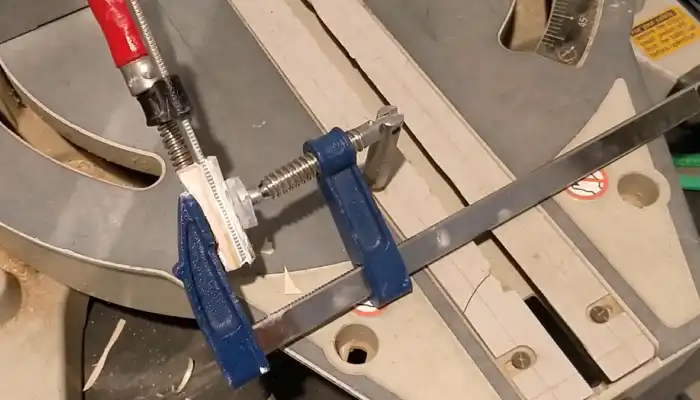
You can achieve a secure hold on your miter saw by using clamps instead of bolting it down. Clamping your miter saw offers a practical and flexible alternative to permanent mounting.
Bar clamps and one-handed bar clamps are commonly used for this purpose. They provide a reliable hold, ensuring your saw stays in place while you work.
With clamps, you can easily detach and reposition your miter saw as needed, without the need for additional tools or hardware. This method is particularly beneficial for those who require mobility in their workspace or use their saw in different locations.
How tight should miter saw blades be to be bolted down?
Miter saw blades should be securely tightened but not overly tight. Over-tightening the blade can potentially damage the saw’s arbor and blade, making it difficult to remove in the future.
To achieve the right level of tightness, it’s advisable to follow the manufacturer’s guidelines, typically provided in the user manual. Usually, this involves using the wrench or tool provided with the saw to snugly secure the blade onto the arbor.
Ensuring the blade is properly tightened is essential for safety and accurate cutting, so it’s crucial to strike the right balance between secure fastening and avoiding excessive force that may lead to problems down the line.
Secure Your Miter Saw: A Key to Safety and Precision
You now have a clear understanding of whether a miter saw needs to be bolted down and the advantages of doing so.
While it’s true that a miter saw can function without being bolted down, securing it to your work surface offers significant benefits, including enhanced safety and improved cutting precision.
A miter saw that is securely bolted will be less likely to tip over or shift while in use, reducing the risk of accidents and ensuring a stable work environment.
Additionally, it eliminates unnecessary vibrations, leading to more accurate and precise cuts.
Whether you’re a woodworking enthusiast or a professional, bolting down your miter saw is a practical step towards a safer and more efficient workspace.

